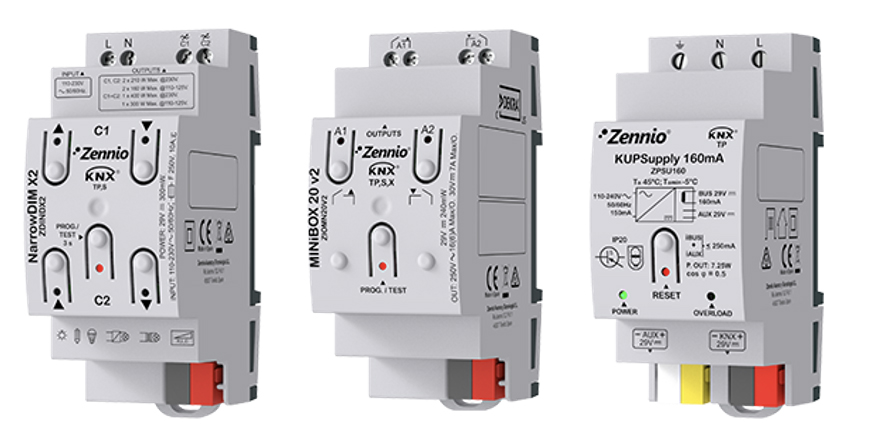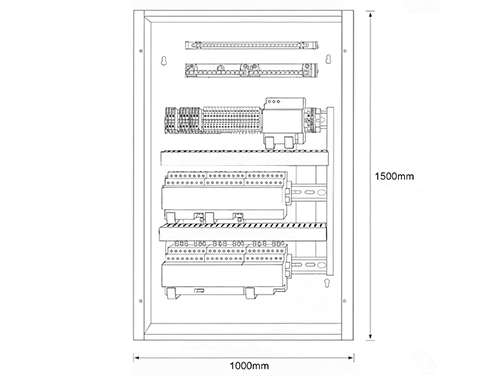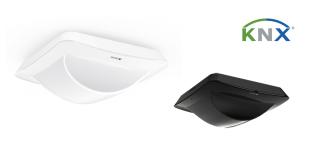
By Simon Buddle
KNX devices dramatically cut panel size requirements, but can smart home integrators win the essential battle for wall space?
Over the past two years I’ve been helping my wife to clear her mother’s house. Nana, as she’s known to the family, passed away last year. And as is the way of things, we’ve been the ones going through the cupboards, drawers, cellar, and attic to clear the house of her precious belongings. I’m pretty hard-nosed when it comes to clutter, and these are the three choices of what to do with it: bin, charity shop or use (keep). Now I know I’ve jumped form precious belongings to clutter, but there’s a simple answer to that. One person’s belongings do not have the same emotional attachment for others. Oh, and volume, the sheer volume of ‘stuff’ in a house defines it as clutter. For a country short on space, we sure do like to stuff our homes full to the gunnels.

Panels require space
I’ve just completed a project with a great company doing a hotel fit-out. I was building panels for them. The first element of the work involved creating a custom panel design. The hotel rooms were already existing, so no modifications could be made. The space we had to work in was limited, to say the least. The final panel design was, in fact, two panels. The first was a standard small consumer unit, with four breakers, one isolator and a Type 2 SPD (Surge Protection Device) – seven module widths in total. The second, for the lighting system, had one processor, one PSU, one switching module, and one dimming module. So, a pretty simple one-room solution, connected to the hotel PMS (Property Management System) via a LAN connection.
In the world of KNX, that doesn’t require too much space – more on that later. However, in the world of other lighting systems, this becomes a considerable chunk of products requiring a large piece of wall. The dimming module requires 12 module widths, the switching module requires 8, the PSU requires 4, and the processor requires 6. Therefore, a system to control four switched and four dimmed lighting circuits took up a whopping 30 module widths. In most rooms, they were only actually controlling two dimmed and two switched circuits and using KNX we can do that in six module widths.

It is true to say, and the right approach is, that clients should be encouraged to choose on the basis of aesthetics first. That then defines the system that will be installed and pretty much every other product is ‘back of house’. But it is interesting how the space conversation is a continuous one that is had on almost every project – we never have enough room for our control panels. I recently, half-jokingly, had the module widths conversation with an architect whilst we were finding space for a lighting control panel. The answer is that KNX versus a well-known lighting brand is 66% smaller in module widths, circuit-per-circuit.

The wall space requirements conversation
The first thing to say is that we do always have a space problem. People rightly want to maximise the space they have. To be honest, the space is more limited in the UK versus, say, the USA. Our houses are smaller and more expensive, meaning people are keen to utilise every square centimetre, but as systems integrators, we need space, and there’s no point shying away from that conversation. For every circuit of lighting, we’re talking about one module width, and for every room of heating, typically one module width too. I do, however, think that things can be simpler than having to work out module widths. It comes down to good design drawings and the knowledge that, plus or minus a couple of 100mms, you’re going to be looking at 1200mm x 700mm for a panel, plus 100mm all around for conduits and cable access. So, around 1.5m high by 1m wide, which is easy to visualise. Any manifold control box, remote blinds and or LED driver locations likewise should be broadly considered as 500mm2. With a set of generic drawings for both space requirements to hand, it is a great starting point for the wall space requirements conversation.

The drawings show that we’ve done this before, we know what it looks like, and we know all of the associated gubbins required to make this work. Anything less, in space terms, does then require a serious look and more detailed design.
Conclusion
Whilst some architects and interior designers are prone to paying lip service to our needs, the sooner we can introduce them to the reality, the sooner any issues can be addressed and resolved. If we have simple facts and figures that can be substantiated by visual aids, we will be seen both as knowledgeable and professional. And the more professional we come across, the more likely we are to win repeat business.
KNX products are nearly always smaller in footprint than any equivalent product on the market, but they do still need wall space. We are selling solutions, not lighting actuators. Part of the solution we are selling also contains our knowledge and experience to install and program the KNX solution we’ve sold, but without the design element at the head of the project, we may cause ourselves problems onsite.
Field the conversation early, and back your words with good design documents. KNX wins every time when it comes to space requirements – you just have to fight for the wall space that you do need.
Simon Buddle CEng MIET, is a consultant for Future Ready Homes, a specialist in BMS and ELV services system design.











